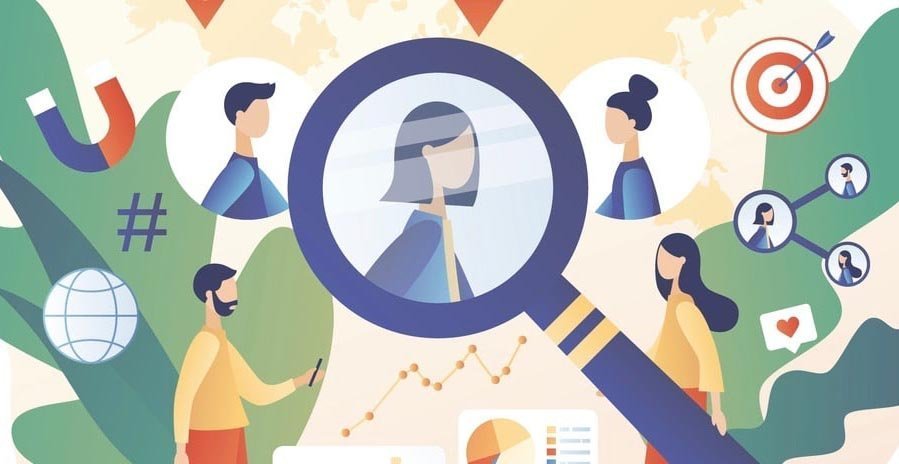
How to Selling Precious Stones Online? Basic Rules
September 24, 2024
5 Best Web Development in Albuquerque, NM
September 24, 2024In the world of marketing and advertising, understanding consumer behavior is paramount. A complex interplay of emotions, thoughts, and motivations drives individuals to make purchasing decisions. As businesses strive to capture the attention of their target audiences, they must delve into the fascinating realm of psychology to comprehend and influence consumer behavior effectively.
In this article, we explore the intricacies of consumer psychology, shedding light on the factors that influence decision-making and providing insights into how businesses can effectively target their audiences.
As a business, if you want to understand consumer behavior and use it to your advantage, you must contact a marketing agency Detroit.
The Power of Perception
Consumers view the world and make sense of the numerous options available to them through their perception of it. Every day, our brains are subjected to an incredible amount of information, which forces us to adapt by developing biases and shortcuts. These cognitive biases, including anchoring, availability, and social proof, significantly impact how we make decisions.
It’s critical to comprehend how customers view your company, product, or service. Businesses can sway consumer perception to fit their marketing objectives by making use of positive associations, appealing visual aesthetics, and compelling narratives. The target audience’s values and aspirations must be reflected in the brand image, which must be genuine and consistent.
Emotions Drive Decision-Making
Although consumers may think they are making rational decisions, emotions actually have a big impact on what they decide. Affective psychology has shown that feelings like happiness, fear, rage, and surprise can significantly impact consumer behavior. Emotional branding seeks to forge a strong emotional connection with customers by utilizing the power of storytelling and evoking particular emotions.
To effectively target audiences, businesses must identify the emotional triggers that resonate with their consumers. Whether it is the thrill of adventure, the comfort of nostalgia, or the desire for social connection, tapping into these emotions can create a strong bond between consumers and brands. By crafting emotionally compelling marketing campaigns, businesses can influence consumers’ decision-making processes and foster long-term loyalty.
The Role of Social Influence
Since humans are social creatures, those around us frequently impact our actions. Social influence greatly impacts how we behave as consumers, influencing our preferences, selections, and purchases. People frequently rely on social proof and look to others for approval before making decisions. This can be seen in the increase in online reviews, influencer marketing, and word-of-mouth recommendations.
Businesses looking to target particular audiences must comprehend the strength of social influence. Brands can make use of social media influencers, testimonials, and endorsements to leverage the psychological concept of social proof and establish credibility. Additionally, since people frequently associate with groups that share their values and aspirations, building communities and encouraging a sense of belonging can increase consumer loyalty and advocacy.
The Paradox of Choice
Although giving customers a lot of options might seem like a smart move, the paradox of choice suggests otherwise. According to research, when given too many options, consumers frequently experience decision paralysis, which lowers their satisfaction levels and increases the likelihood of making no decision.
Businesses must make the consumer decision-making process simpler if they want to avoid the paradox of choice. Brands can reduce decision paralysis and improve the overall customer experience by presenting a carefully curated list of options, making clear recommendations, and disseminating transparent information.
The Power of Persuasion Techniques
Persuasion strategies are essential in influencing purchases in the world of consumer behavior. The use of strategies like scarcity, reciprocity, authority, and consistency can have a big impact on how consumers behave. In order to avoid missing out, consumers are compelled to act quickly when there is a sense of scarcity.
The natural human desire to return favors is tapped into by reciprocity. Authority uses the knowledge and stature of people or organizations to shape public opinion. Humans crave harmony, and consistency encourages people to act per their prior commitments.
Businesses can effectively target and influence their audiences by incorporating these persuasion techniques into marketing strategies. Limited-time offers, loyalty programs, endorsements from industry experts, and aligning messaging with consumers’ previously stated preferences are all ways to employ these techniques and shape consumer behavior.
The Impact of Cognitive Biases
Cognitive biases are inherent flaws in human thinking processes that can significantly influence consumer behavior. These biases can lead to irrational decision-making and distort perceptions of value, risk, and reward. Understanding and leveraging cognitive biases can give businesses valuable insights into consumer decision-making.
For example, anchoring bias occurs when consumers rely heavily on the first piece of information they receive when deciding. By strategically setting an initial anchor, such as a higher price point followed by a discounted offer, businesses can influence consumers’ perception of value and increase the likelihood of purchasing.
Another common bias is confirmation bias, where individuals seek information supporting their preexisting beliefs and ignore contradictory evidence.
The Power of Personalization
Consumers now expect personalized interactions and experiences in the digital age. Individual preferences, behaviors, and demographics are taken into account when personalizing marketing messages, product recommendations, and overall customer experiences. Businesses can accomplish this by making their customers feel important and valued.
Businesses can learn more about the preferences and behaviors of specific consumers by segmenting their customer base and using data analytics. This enables them to deliver specialized offers, individualized product recommendations, and targeted marketing campaigns.
Furthermore, personalization extends beyond marketing efforts. It includes enhancing the entire customer journey, from browsing to post-purchase interactions. By providing personalized customer support and timely follow-ups, businesses can strengthen their relationship with consumers and create a positive brand experience that drives repeat business and advocacy.
Conclusion
For companies looking to succeed in the market, analyzing and focusing on consumer behavior is a constant effort. Businesses can better understand their audiences and adjust their strategies by probing the nuances of perception, emotions, social influence, cognitive biases, persuasion techniques, and personalization. Businesses can create lasting connections with their customers and accomplish their marketing objectives by understanding them, identifying with their values, and providing personalized experiences.





